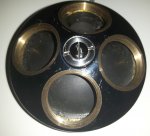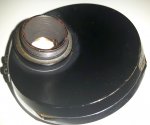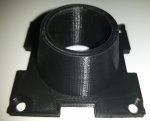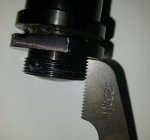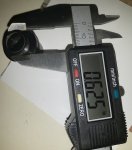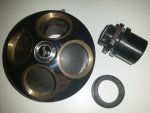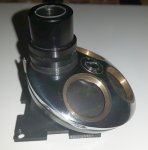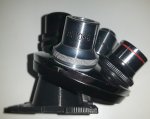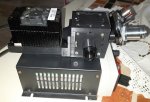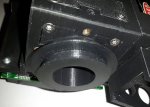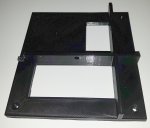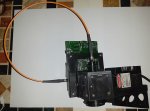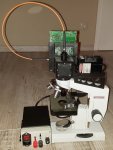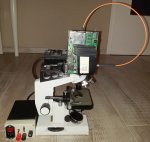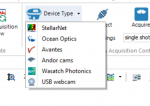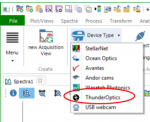Hello,
the entire project is considered in detail quite complex and therefore not in a slip here to describe.
So I apologize for the fact that there are quite a few individual postings here,
but even the processing of all descriptions is associated with a lot of work
and the number of pictures would blow up the frame of a single post.
Here's the next part:
In addition to the already described component of the IR holder further side walls are equipped with functions.
The used DPSS laser has to be attached to the module in a stable position,
for this I have constructed a traverse.

This is flanged to the pre-existing threads and holes in front of the inlet (IR filter side).

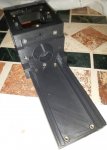
The internally positioned dichroic does not reflect the total laser power at right angles to the subject.
I would not like to leave the rest (partly polarized) inside the ucube and therefore I just placed a side wall with a central hole on this opposite side.
Here I also see if the laser is placed in about centric position.

The stoke signal used for the evaluation must be bundled on the side opposite the objectiv and fed to the fiber.
For this I use again the collimator from the already known assembly of the beamsplitters of B & W-Tek.
Of course, other solutions are also easily feasible here, because almost any technical solution can be printed in 3D.
This collimator has a special fine thread, which I could actually print.

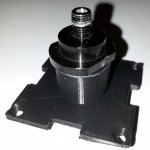
This assembly is placed in front of the long-pass filter inside and already described on the assembly side of the dice opposite the lens.
I have mounted several types of filters in such 30 x 30 x 10 mm holders,
which I can later try out or combine.
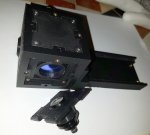
Once again a reminder of a picture of the functional whole assembly,
this can now be modified in further steps, that the handling of objects to be examined is guaranteed.
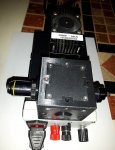
Finally, for this log a picture of the first functional result.
A clean clear signal in the strength of about 5000 counts exactly 1332cm-1 in stoke direction, so diamond.
So much in advance ..... there is still a lot more possible ....

the entire project is considered in detail quite complex and therefore not in a slip here to describe.
So I apologize for the fact that there are quite a few individual postings here,
but even the processing of all descriptions is associated with a lot of work
and the number of pictures would blow up the frame of a single post.
Here's the next part:
In addition to the already described component of the IR holder further side walls are equipped with functions.
The used DPSS laser has to be attached to the module in a stable position,
for this I have constructed a traverse.

This is flanged to the pre-existing threads and holes in front of the inlet (IR filter side).


The internally positioned dichroic does not reflect the total laser power at right angles to the subject.
I would not like to leave the rest (partly polarized) inside the ucube and therefore I just placed a side wall with a central hole on this opposite side.
Here I also see if the laser is placed in about centric position.

The stoke signal used for the evaluation must be bundled on the side opposite the objectiv and fed to the fiber.
For this I use again the collimator from the already known assembly of the beamsplitters of B & W-Tek.
Of course, other solutions are also easily feasible here, because almost any technical solution can be printed in 3D.
This collimator has a special fine thread, which I could actually print.


This assembly is placed in front of the long-pass filter inside and already described on the assembly side of the dice opposite the lens.
I have mounted several types of filters in such 30 x 30 x 10 mm holders,
which I can later try out or combine.

Once again a reminder of a picture of the functional whole assembly,
this can now be modified in further steps, that the handling of objects to be examined is guaranteed.

Finally, for this log a picture of the first functional result.
A clean clear signal in the strength of about 5000 counts exactly 1332cm-1 in stoke direction, so diamond.
So much in advance ..... there is still a lot more possible ....

Last edited:




